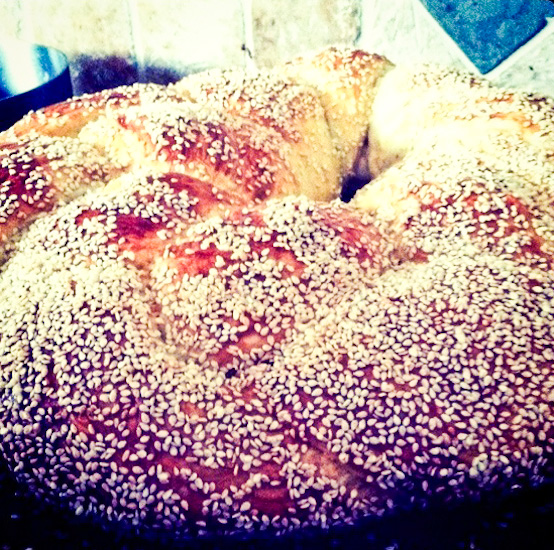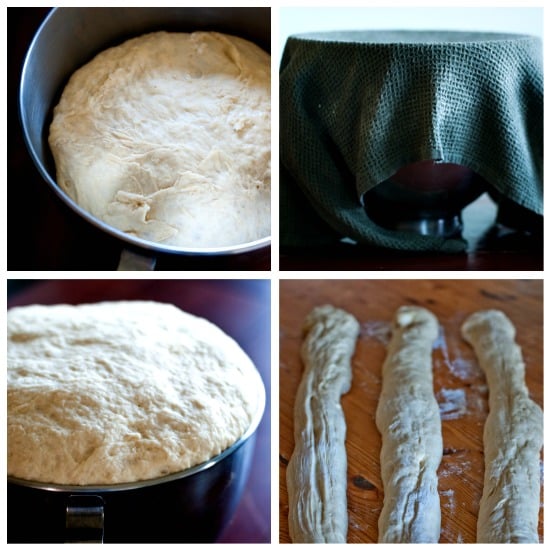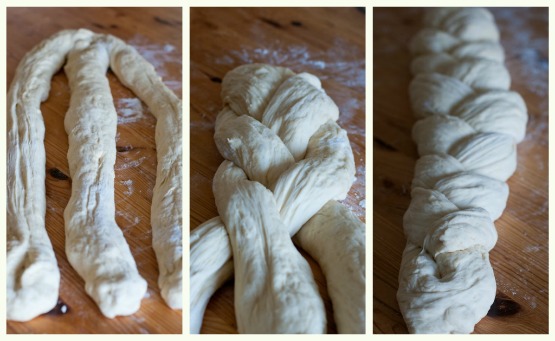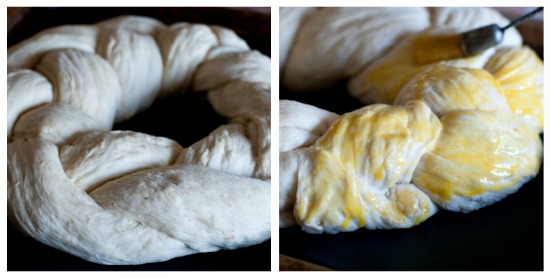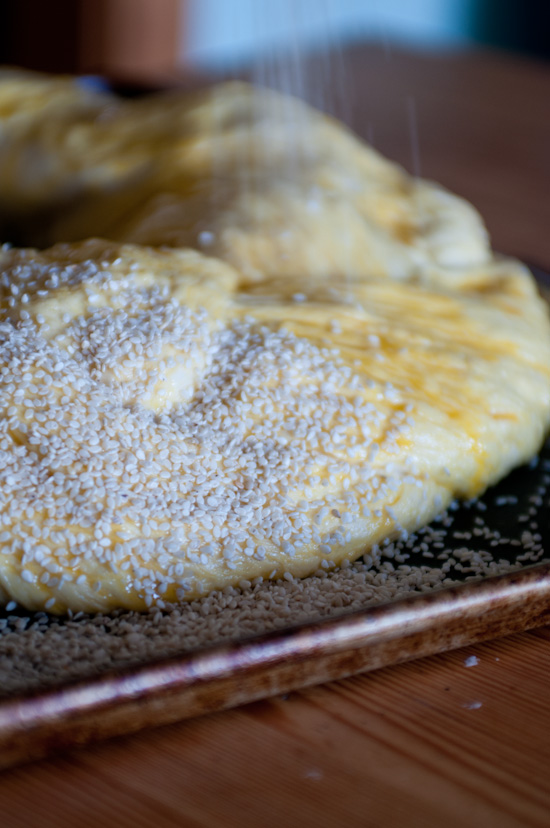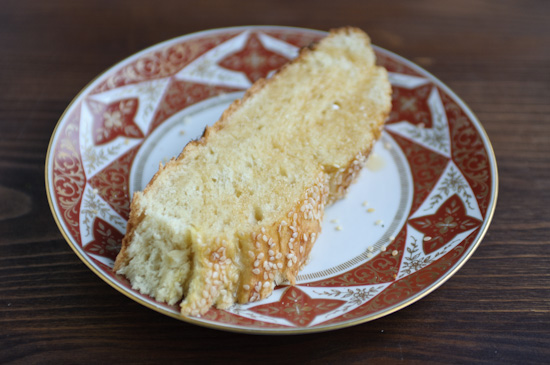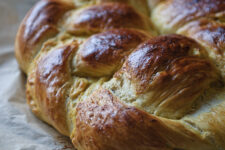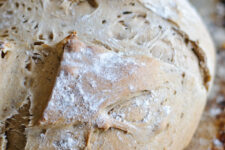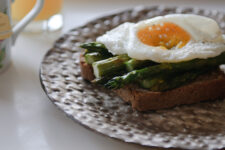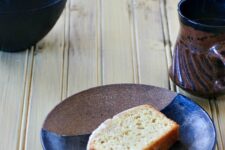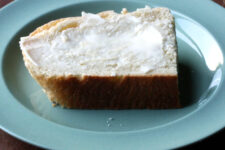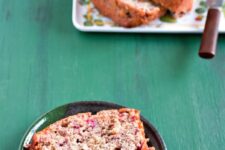When I baked this huge and glorious sesame seed-studded challah the other day, I only had a moment to snap this picture with my iPhone before my family descended like vultures. What can I say…we Abramsons get excited about challah.
I baked this in honor of Rosh Hashanah, the Jewish New Year. Rosh Hashanah begins tonight, and challah plays an integral role in the celebration of this holiday. Challah actually makes an appearance at just about every traditional Jewish meal (except at Passover, where leavened bread is excluded), and you can read more about the significance of challah here, if you like. But you don’t have to be Jewish to enjoy challah. This bread- which is rich in symbolism and in eggs- is absolutely delicious, and it’s great in French toast if you have any left over.
If you shy away from baking your own bread because you think it’s too much work, I want you to know that I started this recipe at almost 4 in the afternoon and we were eating it less than 3 hours later. And most of that time is inactive, as the dough does its rising.
This recipe is adapted from the one for “Rabbi’s Wife’s Challah” in Joan Nathan’s wonderful book: Quiches, Kugels, and Couscous: My Search for Jewish Cooking in France. It actually does not contain as many eggs as challahs I’ve made in the past, but it’s got a fantastic appearance, texture, and taste. Though it’s more traditional to make challah with oil (the healthiest ones to use would be olive, grapeseed, or peanut), I don’t observe Kosher dietary laws so used butter instead. Also, I took Melissa Clark’s advice and made sure to keep the challah dough pretty moist/sticky…
When celebrating Rosh Hashanah, Jews eat foods that are sweet in the hopes that the year ahead will be sweet. Honey is consumed quite liberally on this holiday, and that’s why I used it to sweeten this bread. Some people also like to add raisins to their challahs- I am waving at you right now Ethan– feel free to do so- I think 1/2 cup would be a good amount, and it’s best to soak them in warm water, then drain them, before adding to the dough.
It is customary to braid challah. While a 6 strand braid is more complicated, this 3 strand braid is easily accomplished. If you have braided hair, you can braid challah. This dough does rise/puff out quite a lot, which makes the strands a little unwieldy, but know that your challah doesn’t have to look perfect (mine certainly didn’t).
After you have braided the challah, it is a Rosh Hashanah tradition to bake the bread in a round shape: the circle is a symbol of the cycle of life. Joan recommends brushing the dough with an egg wash twice: once right after you shape it in the round, and again after the final rise.
I love how the thick egg wash (to which I added a little honey) gives the bread a lovely golden hue; it also provides a sticky surface on which to shower poppy or sesame seeds. I went with sesame seeds only, but the challah in Joan’s book is decorated with alternating bands of both.
[cft format=0]
More challahs for your reading pleasure:
Challah from Mrs. Wheelbarrow
Challah from Mark Bittman
Gluten and Dairy Free Challah from Gluten Free Canteen
Recipe for Challah Bread
Ingredients
For the challah dough:
- *2 tablespoons active dry yeast
- *2 tablespoons honey I use raw honey: you can double the amount or add as much as 1/2 cup if you'd like a sweeter bread...you'll need to add more flour if you use more honey
- *2 cups warm water
- *1 whole egg plus 1 egg yolk preferably organic and free-range (I use eggs from my backyard chickens): you can add additional eggs, if you want a richer bread...if you do, you'll need to add more flour
- *1/3 cup organic unsalted butter, melted (or use an oil like olive or grapeseed)
- *7 cups organic all-purpose flour plus more as needed
- 1 tablespoon fine sea salt
For the glaze:
- *2 egg yolks
- *2 teaspoons honey
For decorating the challah:
- sesame seeds and/or poppy seeds
Instructions
- 1. In the bowl of an electric stand mixer, dissolve yeast and honey in 2 cups of warm water. Allow to stand for 5 minutes.
- 2. Add the egg and the egg yolk and the butter or oil, and mix well.
- 3. Add the salt and the flour one cup at a time, beating after each addition with the dough hook. When the dough starts to come together, turn out onto a lightly floured surface and knead with your hands. Knead until smooth and no longer sticky, adding flour as needed, but don't add too much flour: you want the dough to stay a bit moist.
- 4. Rinse out bowl and grease with additional melted butter or oil. Put dough in the bowl, and cover with a clean, damp cloth. Set it in a warm place to rise for 45 minutes, or until dough has doubled in bulk.
- 5. Punch down the dough and turn out onto floured board. Divide into three balls, knead each one briefly, then roll each into long strand. Pinch the ends of the three strands together firmly, then braid them. Form into a round braided loaf by bringing ends together, curving braid into a circle. Pinch the ends together.
- 6. Cover a baking sheet with parchment paper or a silicon baking mat, and (carefully!) transfer the challah to the sheet. Beat egg yolks and honey together in a small bowl and brush the challah with it, then place dough in cool oven and allow it to rise for 45 minutes.
- 7. Take dough out of oven and brush it with more of the egg yolk/honey glaze. Sprinkle on the sesame seeds and/or poppy seeds (Joan Nathan recommends using both, in thick alternating strips around the dough).
- 8. Place challah back in the oven and turn the temperature to 350 degrees F. Bake for 40-45 minutes, or until the bread has a nice hollow sound when tapped on the bottom. Cool on a rack before slicing...it's delicious when served with butter and honey.

